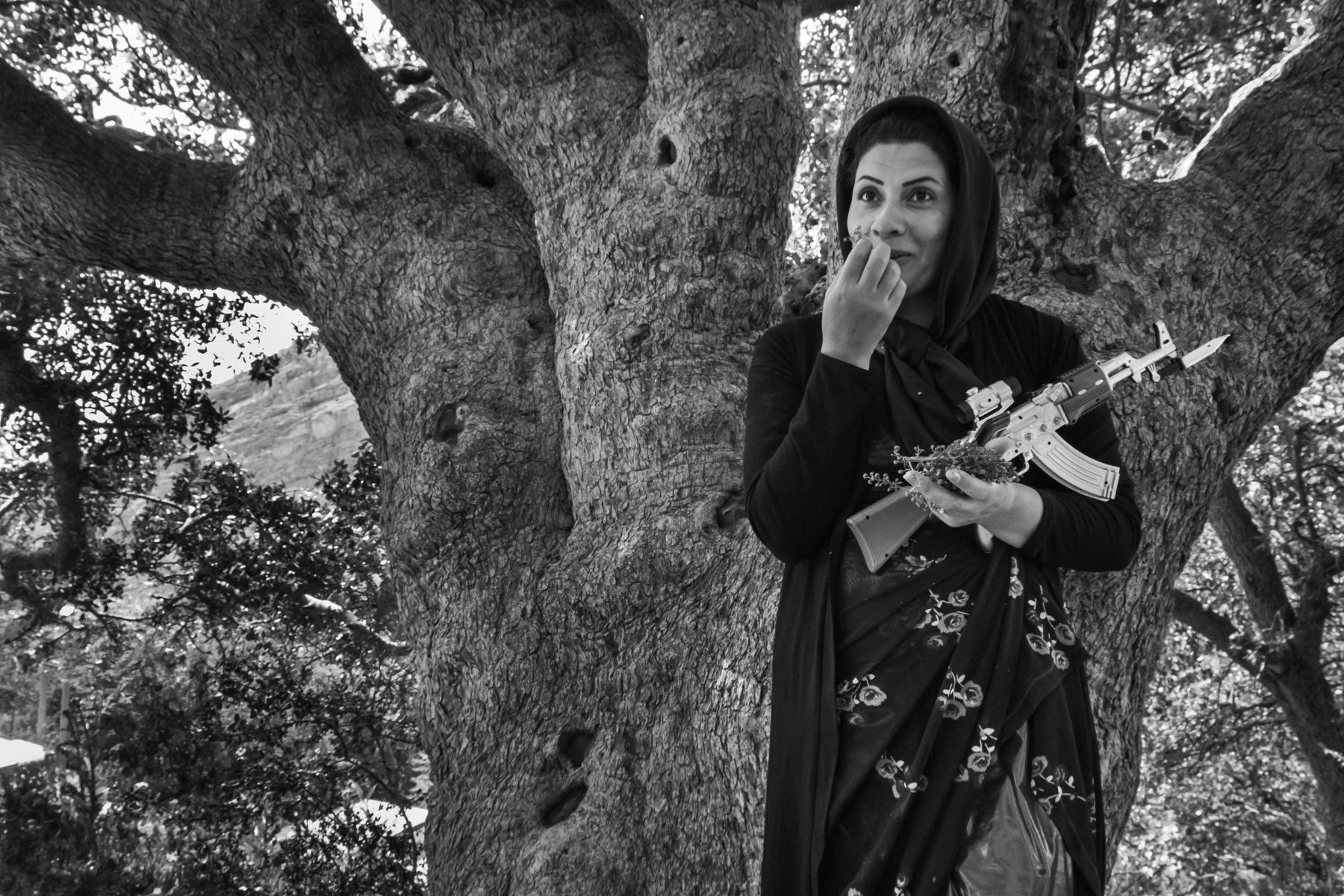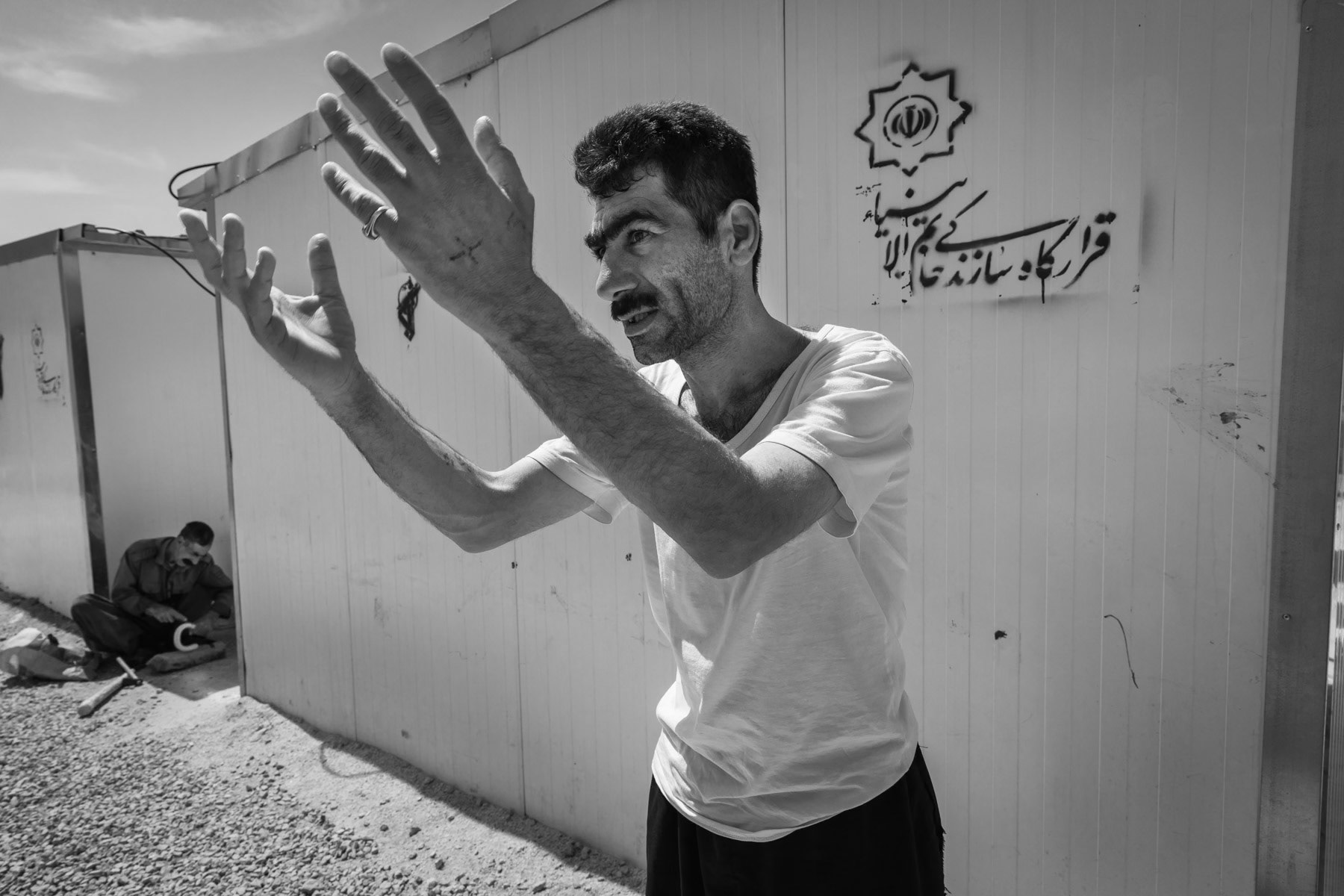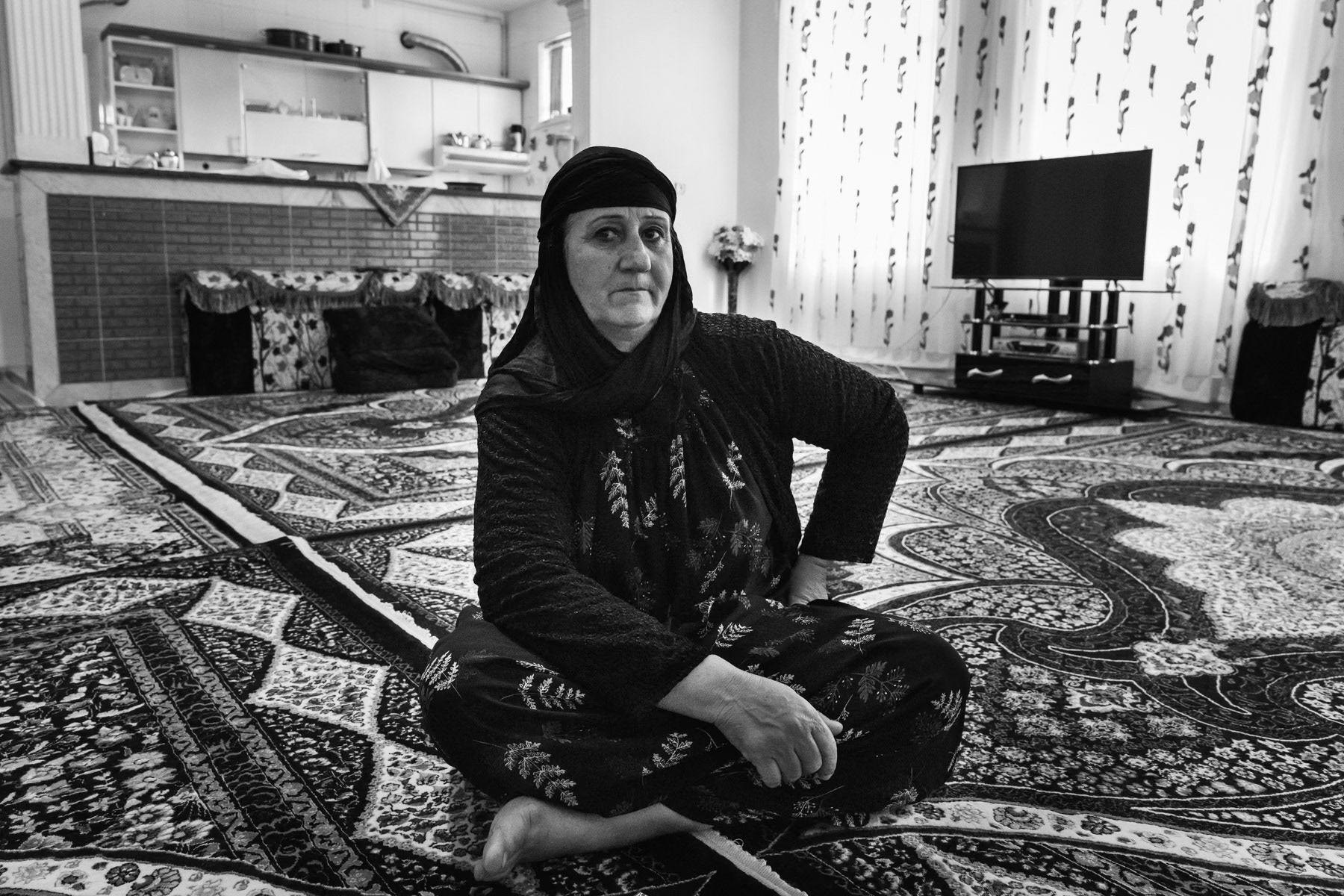A story of people victim of chemical weapons and struggling with the consequences long after the war has ended.
Zardeh, a small village in western Iran near the mountainous border with Iraq, has a tragic history shaped by war and natural disaster. On July 22, 1988, as the Iran-Iraq War drew to a close, Iraqi aircraft launched a devastating chemical attack on the village using mustard and nerve gas. Decades later, in December 2017, an earthquake severely damaged Zardeh, leaving hundreds of villagers, many of them survivors of the chemical attack, homeless and reliant on emergency shelters.
The 1988 attack targeted villagers and visitors gathered at a local shrine to celebrate Eid. Of the 275 civilians killed, most were in the shrine’s vicinity. At the time, Zardeh’s population was around 1,700, similar to today. Survivors recall the attack vividly: unusual yellow smoke and a smell of apples, garlic, and flowers signaled the use of chemical weapons. Soon, birds fell from trees, and people experienced choking, paralysis, and death. Adding to the devastation, Zardeh’s high-lying water reserves were contaminated, and gas spread to densely populated lower areas, worsening the crisis as villagers unknowingly rinsed their faces with poisoned water.
The isolated location of Zardeh compounded the tragedy. Blocked roads delayed medical aid, leaving many without timely treatment. For years after the attack, agriculture and livestock farming—essential livelihoods in this remote Kurdish village—were impossible due to contamination.
Over 30 years later, the chemical attack’s effects persist. Survivors suffer chronic respiratory problems requiring oxygen, coughing fits, blindness, eye infections, skin diseases, burns, infertility, and severe mental health issues. Frequent sand and dust storms, exacerbated by climate conditions in the Arabian Peninsula and Iraq, worsen respiratory and eye problems for this vulnerable population. Some villagers, especially since the 2017 earthquake, have sought to relocate to less hostile environments.
Zardeh’s tragedy reflects a broader pattern of chemical weapon use by Saddam Hussein’s regime during the Iran-Iraq War. Iraqi forces used these weapons extensively, targeting both Iranian soldiers and civilians, as well as Saddam’s own Kurdish population. Chemical attacks like the one on Zardeh are estimated to have killed 5,000 to 10,000 Iranian soldiers and civilians. Today, over 100,000 Iranians receive government compensation and specialized medical care for injuries and illnesses caused by chemical weapons. These survivors bear long-term physical and psychological scars, serving as living reminders of the war’s brutality and the devastating consequences of chemical warfare.
Zardeh’s story is a poignant example of the enduring legacy of chemical attacks. The village’s struggle underscores the need for international attention to survivors' ongoing medical and psychological needs, as well as the broader imperative to prevent the use of chemical weapons. Despite decades passing, Zardeh’s residents continue to face immense challenges, both from the remnants of war and from the hardships of rebuilding their lives amid new disasters.

Victim of a chemical attack on the village at the end of the Iran/Iraq War in 1988 and nowadays homeless following a severe earthquake last December. Zardeh, Kermanshah Region, Iran, April 2018

The hills above the village of Zardeh where Iraqi airforce dropped chemical bombs in July 1988 at the end of the Iran/Iraq War. Zardeh, Kermanshah Region, Iran, April 2018

Survivors recall that during the chemical attack it smelled like flowers, apples and garlic until they started to cry, choke and be blinded. Zardeh, Kermanshah Region, Iran, April 2018

Road leading to a temporary container settlement for victims of the recent earthquake that hit the region. Zardeh, Kermanshah Region, Iran, April 2018

Resident and survivor of the chemical attack on the village in July 1988. No troops were present and a cease fire had already been signed when the attack took place, clearly targetting the civilian population who is mainly Kurdish. Zardeh, Kermanshah Region, Iran, April 2018

Zardeh, Kermanshah Region, Iran, April 2018

Residents and survivors of the chemical attack on their village in July 1988. No troops were present and a cease fire had already been signed when the attack took place, clearly targetting the civilian population who is mainly Kurdish. Zardeh, Kermanshah Region, Iran, April 2018

Zardeh, Kermanshah Region, Iran, April 2018

Victim of a chemical attack on the village at the end of the Iran/Iraq War in 1988 and nowadays homeless following a severe earthquake last December. Zardeh, Kermanshah Region, Iran, April 2018

Children playing on the outskirts of the village. Zardeh, Kermanshah Region, Iran, April 2018

Victim of a chemical attack on the village at the end of the Iran/Iraq War in 1988 and nowadays homeless following a severe earthquake last December. Zardeh, Kermanshah Region, Iran, April 2018

Outskirts of the village. Zardeh, Kermanshah Region, Iran, April 2018

One of the locations overlooking the village where in July 1988 the Iraqi airforces dropped several chemical bombs. No troops were present and a cease fire had already been signed when the attack took place, clearly targetting the civilian population who is mainly Kurdish. Zardeh, Kermanshah Region, Iran, April 2018

Resident and survivor of the chemical attack on the village in July 1988. No troops were present and a cease fire had already been signed when the attack took place, clearly targetting the civilian population who is mainly Kurdish. Zardeh, Kermanshah Region, Iran, April 2018

Residents and survivors of the chemical attack on their village in July 1988. Nowadays living in temporary shelters following the destruction of their house by a deadly earthquake in December 2017. Zardeh, Kermanshah Region, Iran, April 2018

The mountains overlooking the village of Zardeh just few kilometres short of Iraq. Kermanshah Region, Iran, April 2018

Victim of a chemical attack on the village at the end of the Iran/Iraq War in 1988. Even 30 years ater the attack she has permanent damaged eye-sight and frequent headaches. Zardeh, Kermanshah Region, Iran, April 2018

Graves for some of the victims of the chemical attack on the village in June 1988, 275 people died as a consequence of the chemical attack. Zardeh, Kermanshah Region, Iran, April 2018

Residents and survivors of the chemical attack on their village in July 1988. No troops were present and a cease fire had already been signed when the attack took place, clearly targetting the civilian population who is mainly Kurdish. Zardeh, Kermanshah Region, Iran, April 2018

Resident and survivor of the chemical attack on the village in July 1988. No troops were present and a cease fire had already been signed when the attack took place, clearly targetting the civilian population who is mainly Kurdish. Zardeh, Kermanshah Region, Iran, April 2018

An ex resident of Zardeh and survivor of the chemical attack. Moved last year to the city 3 hours away to be closer to medical care and away from the dust and sand storms affecting the village. Kermanshah, Iran, April 2018

An ex resident of Zardeh and survivor of the chemical attack. Moved last year to the city 3 hours away to be closer to medical care and away from the dust and sand storms affecting the village. Kermanshah, Iran, April 2018

Temporary container settlement for victims of the recent earthquake that hit the region. Zardeh, Kermanshah Region, Iran, April 2018

A person of Zardeh with mental health problems. Survivors recall that during the chemical attack it smelled like flowers, apples and garlic until they started to cry, choke and be blinded. Zardeh, Kermanshah Region, Iran, April 2018

Residents of Zardeh in their destroyed house by a deadly earthquake in December 2017. Zardeh, Kermanshah Region, Iran, April 2018

Victim of a chemical attack on the village at the end of the Iran/Iraq War in 1988 and nowadays homeless following a severe earthquake last December. Zardeh, Kermanshah Region, Iran, April 2018

Nowadays the village of Zardeh faces regular sand and dust storms making it difficult to stay outside for long periods, especially for victims of the chemical attack back in 1988 who suffer of chronic repiratory problems. Zardeh, Kermanshah Region, Iran, April 2018

Resident and survivor of the chemical attack on the village in July 1988. One of his young sons was killed during the attack. No troops were present and a cease fire had already been signed when the attack took place, clearly targetting the civilian population who is mainly Kurdish. Zardeh, Kermanshah Region, Iran, April 2018

Zardeh, Kermanshah Region, Iran, April 2018










